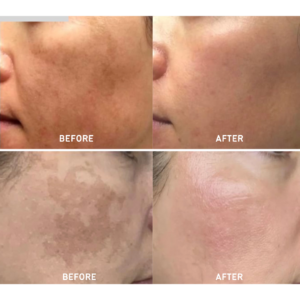Melasma unmasked: strategies for diagnosis, prevention and treatment

Melasma is a common form of hyperpigmentation, yet it is one of the toughest to treat. Many factors contribute to melasma, with the most significant triggers including hormonal changes, birth control pills, pregnancy, sun and heat. It most commonly affects areas on the face – above the lips, cheeks, and forehead – but can also affect the sun-exposed areas of the arms.
Combating melasma requires a multipronged approach and should be clinically diagnosed by a board-certified dermatologist. Leah Ansell, M.D., F.A.A.D. – a board-certified dermatologist with expertise in cosmetic, medical and surgical dermatology and a focus on providing care for the entire family in Rye — evaluates each individual case and tailors the best regimen/plan for each patient from the following options:
- Strict sun-protection with UPF-protective wide-brimmed hat at all times when in the sun;
- Layering sunscreen every single day. (The first layer is a non-tinted chemical sunscreen, from Europe typically, or a non-tinted mineral sunscreen such as Isdin. The second layer is a tinted sunscreen containing iron-oxide, which protects against ambient light, such as Alastin Hydratint) ;
- Medical grade lightening serums;
- Prescription lightening creams;
- The oral prescription medication Tranexamic Acid;
- Chemical peels;
- Gentle laser treatments such as Clear+Brilliant Permea; and
- Heliocare vitamins on a daily basis, particularly during summer or before/during vacations.
Unfortunately, melasma is a “chronic condition,” but it does generally disappear after months or years. The right treatment(s) can work quickly, within four to six weeks, but continued prevention is key.
For more, click here.